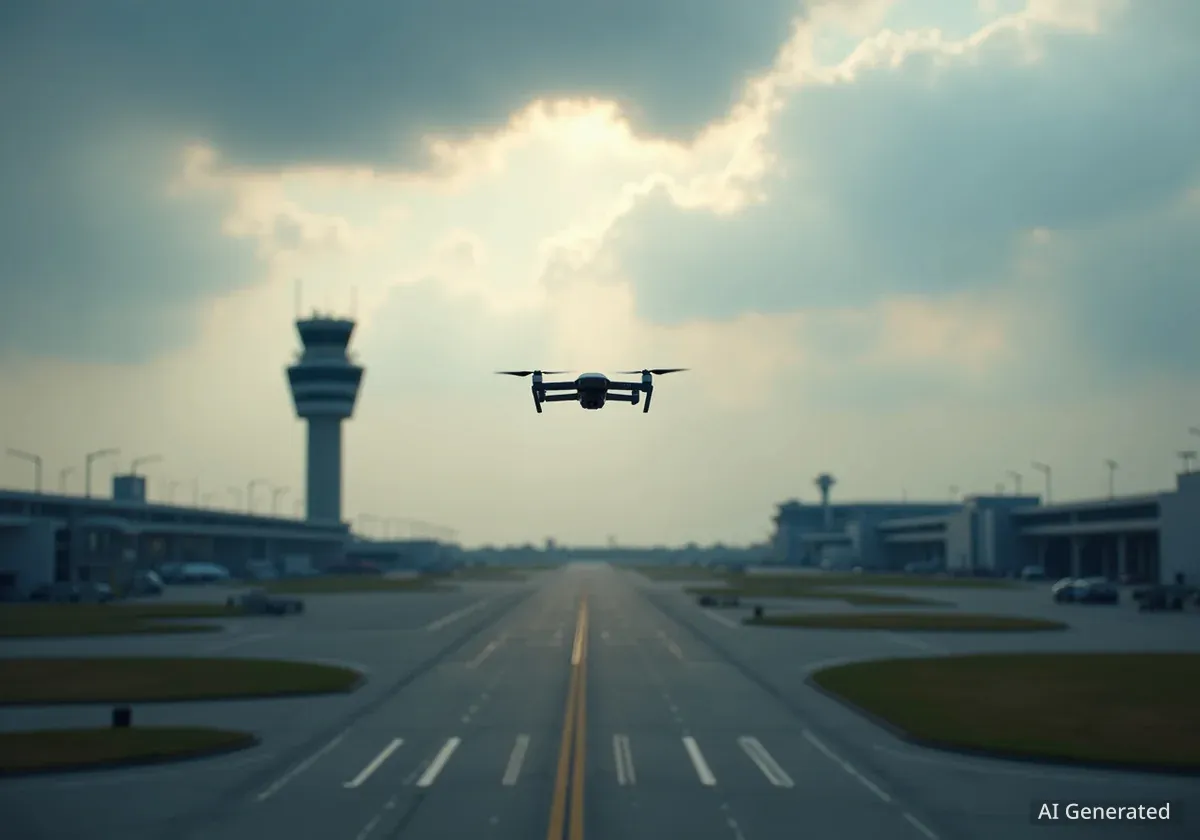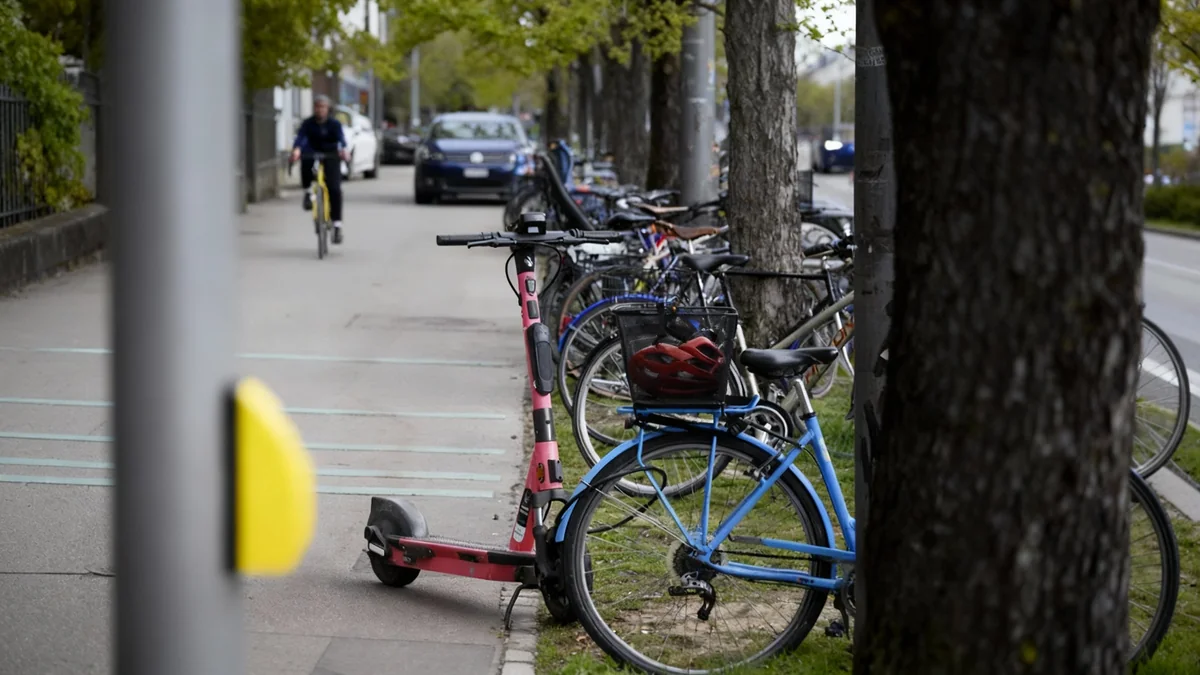Swiss airports, including key facilities like Bern-Belp, show significant vulnerabilities to drone attacks. This comes as suspicious drone activity increases across Europe. Experts warn that current defenses are insufficient against potential threats, which could cause major damage to critical infrastructure.
Key Takeaways
- European airports report rising suspicious drone incidents.
- Switzerland's FOCA recorded 50 critical drone incidents this year.
- Most Swiss airports lack advanced drone detection systems.
- Swiss Army plans 100 million francs for drone defense systems.
Rising Drone Incidents Across Europe
Reports of suspicious drone flights are frequent across Europe. These incidents occur near military bases, energy facilities, and airports. Recently, drones disrupted operations at Copenhagen and Oslo airports. Unmanned aircraft also flew over five airports in Denmark. Sightings were also reported near a vital naval base in southern Sweden.
German security agencies have noted a significant increase in such incidents since the start of the Ukraine war. Germany is now upgrading its systems to detect drones more effectively. These devices are no longer mere toys; they represent a real security risk. The ongoing conflict highlights how small drones can pose problems for critical infrastructure.
Drone Incident Statistics
- 2024: The Federal Office of Civil Aviation (FOCA) recorded 68 reports of potential conflicts between manned aircraft and drones.
- Current Year: FOCA has already registered 50 such incidents.
- Most incidents involve recreational drones.
Swiss Preparedness Lags Behind
Research indicates that Switzerland is not adequately prepared for drone threats. This is despite a rising number of drone observations near airports. A FOCA spokesperson stated, "The number of incidents has increased again over the past three years."
Only a few Swiss airports have modern drone detection systems. The Federal Office of Civil Aviation (FOCA) notes that such systems are "relatively new." They are currently operational at "only a few airports."
Airports Taking Action
Some Swiss airports have begun to upgrade their defenses. St. Gallen-Altenrhein Regional Airport was a pioneer. In 2020, it installed a professional detection system. This system uses multiple passive sensors developed with the Australian company DroneShield. It does not interfere with other systems.
When an alarm sounds, the system provides the control tower with the drone's position. It also offers a live image of the drone. St. Gallen-Altenrhein Airport hosts many private jets and sees frequent traffic during the World Economic Forum (WEF). This led to its investment in advanced drone detection.
International Regulations
FOCA refers to international airport regulations. "These do not specify how to address the danger of drones," says FOCA spokesperson Christian Schubert. This lack of specific guidance means airports must decide on their own drone defense strategies.
Zurich Airport also has a similar system. Andrea Bärwalde, a spokesperson, confirmed that "a drone detection system has been in use since the beginning of the year." This system detects drones in real-time and issues alerts. It can identify both registered and unregistered drones.
"This allows security-relevant incidents to be documented and, if necessary, tracked," stated Zurich Airport officials. In emergencies, air traffic can be stopped.
Other major airports are less transparent. Geneva Airport stated it has action plans for drone attacks. However, it did not confirm if a detection system is in place. "For security reasons, we do not publicly disclose confidential measures," a spokesperson said. Euro-Airport Basel provided similarly vague answers.
Bern-Belp Airport's Vulnerability
Bern-Belp Airport is more open about its situation. Urs Ryf, Chairman of the Board of Directors and CEO of Bern Airport, admitted: "It is true, Bern-Belp Airport does not have a drone detection system. This would simply be too expensive for regional airports."
Bern-Belp regularly handles private jets. These include flights by the Federal Council using Air Transport Service aircraft. Heads of state from other countries also often land at Belpmoos.
Airport CEO Urs Ryf stated, "There remains a residual risk that a small drone could collide with an aircraft during takeoff and landing or enter an engine."
Ryf emphasized that the airport is monitored 24/7. However, he added that attacks or sabotage "can never be completely ruled out." He noted, "This applies not only to our airfield and not only to drones. Terrorists could also use other means."
The Threat of Small Drones
With some technical knowledge, an attack on a departing aircraft using a drone would not be difficult. The impact could be devastating. A quadcopter, a battery-powered drone with four horizontal propellers, is sufficient. Hundreds of thousands of hobby pilots worldwide use these drones, which cost around a thousand francs.
Roland Siegwart, a drone expert at ETH Zurich, explained: "Thanks to integrated GPS, such drones can be controlled very precisely." These drones typically include a geo-fencing system. This system automatically stops them from approaching critical infrastructure like airports. However, Siegwart said this system can be easily removed with the right expertise.
Potential for Catastrophe
Based on information from Northern Europe, Siegwart believes the drones sighted there were quadcopters. Their ability to fly over large airports shows they overcame geo-fencing systems. This allowed them to enter restricted airport areas.
Siegwart warns that terrorists or saboteurs could cause a disaster with just one quadcopter on an airport site. "Such drones can easily transport 500 grams of explosives or more," he said. This could "cause devastating damage at an airport." For example, a drone could attach an explosive device to an aircraft wing during takeoff. It could also detonate on the runway during an approach.
Engine Damage Risk
FOCA also recognizes the risks. "The greatest danger from a drone flying near an airport is the risk of collision with an aircraft," FOCA spokesperson Schubert said. "This includes dangers from unlawful acts or terrorism." If a drone weighing 250 to 500 grams enters an engine, "this could lead to engine failure in the worst case," Schubert added.
Challenges in Drone Defense
Even airports with the best equipment and modern detectors are not fully safe from drones. ETH expert Siegwart stated, "To date, there is no defense system that offers truly good protection."
Theoretically, a quadcopter could be shot down with a firearm. However, hitting the drone can be very difficult. Drones can be controlled in unpredictable, zigzag flight paths. Shooting them down with cluster munitions is considered the most promising method. Automated defense systems exist but are not foolproof. "There is a constant race between drone manufacturers and developers of defense systems," Siegwart noted.
Military Preparedness
Across Europe, civilian airports and police are not the only ones preparing for drone threats. The military is also interested in drone defense. Last summer, the "NZZ am Sonntag" reported on a Swiss Army drone defense exercise. During this exercise, numerous other unmanned aircraft were detected over the Meiringen military airfield. These aircraft were reportedly scouting the Air Force facilities.
Army representatives openly spoke of suspected espionage. Russia and China are considered potential threats. During its exercises in Switzerland, the army tested jammers. Jamming disrupts radio contact with drones. Some systems can even take control of foreign drones. However, tests revealed another problem: these defenses can also interfere with civilian frequencies. This can disrupt smartphones, navigation, and internet access.
Currently, the army lacks effective means for medium and long-range drone defense. A Federal Council report on drone defense, published on Friday, highlighted significant gaps. If Russian drones appeared over Switzerland, they would be difficult to combat. The VBS (Federal Department of Defence, Civil Protection and Sport) has allocated 100 million francs for drone defense. This includes 70 million for basic research and initial systems against mini-drones. Another 30 million is for additional procurements. However, even these funds may not be enough to build effective protection by 2033.




